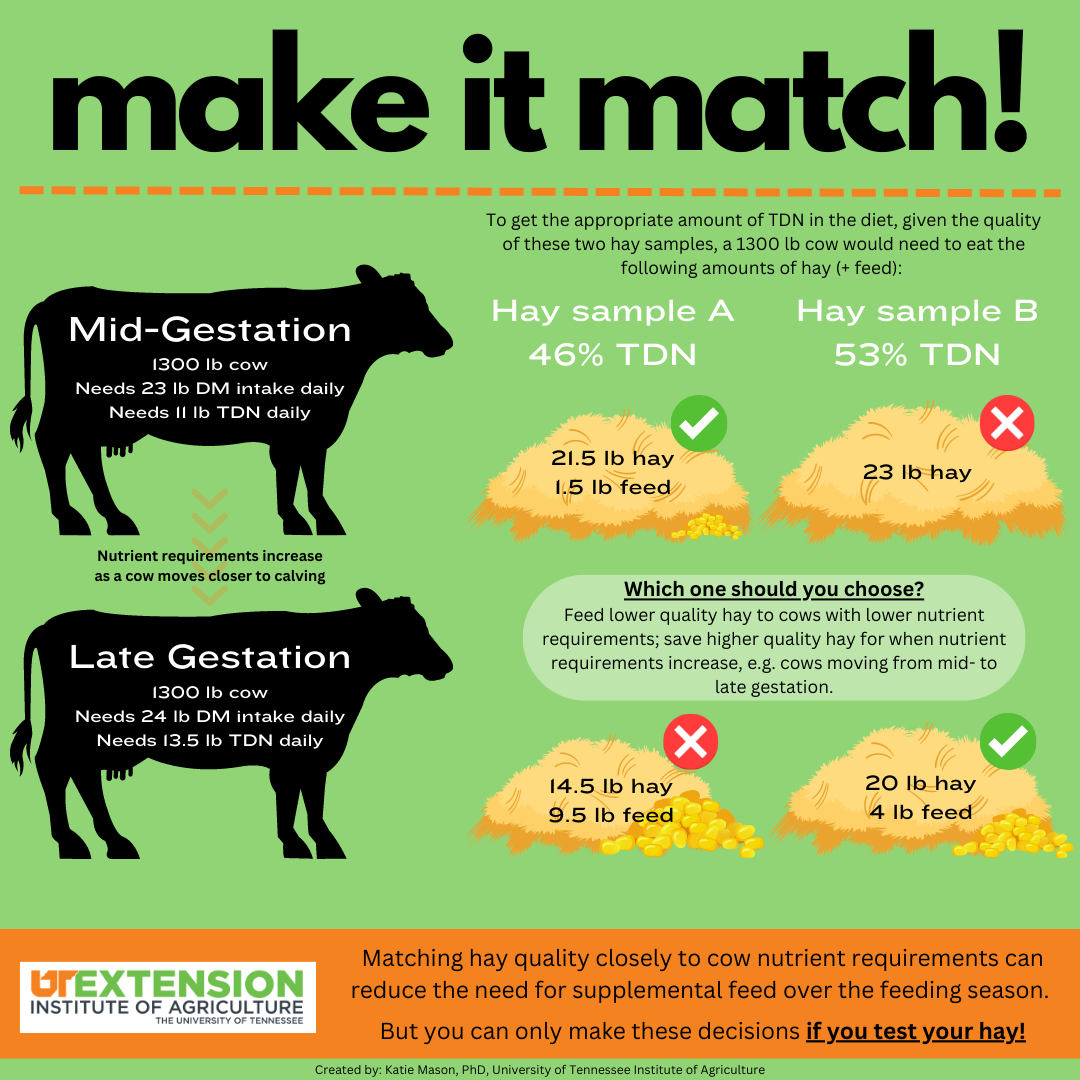

Dr. Katie Mason
Assistant Professor and Extension Beef Cattle Nutrition Specialist
Department of Animal Science
P: 865-974-8941
In the midst of a busy hay season, one often thinks about when they will get their next cutting. Weather typically dictates cutting date, rather than stage of maturity. Every so often, things align just right to get a hay harvest at the ideal stage of maturity, but a lot of times cutting takes place when the forage is mature, resulting in lower quality hay. Of course, there is a tradeoff of yield and quality, but quality is so important when it comes to actually utilizing the hay during the winter hay-feeding season.
Let’s look at an example of hay samples at two different quality levels and see what the resulting need for supplementation would be:
It is the beginning of December and you have a group of 1300-pound cows that are mid-gestation. Each cow will eat about 23 pounds of dry matter per day, of which, 11 pounds should be TDN. Because you tested your hay in the summer, you know you have hay of two different qualities to choose from. Sample A has 46% TDN and Sample B has 53% TDN. You have access to a supplemental feed that has 72% TDN. The table below shows how this feeding situation could play out after balancing for the required amount of TDN in the diet.
| Sample | Hay Needed | Supplement Needed |
| A | 21.5 lb DM | 1.5 lb DM |
| B | 23 lb DM | 0 lb DM |
It’s tempting to feed Sample B hay because you don’t need to supplement. But let’s think ahead… if you feed out all of Sample B hay, by the time you get to March, your cows have increased requirements and you only have lower quality hay left. Here is what the feeding plan would look like for a 1300 lb cow in late gestation, eating 24 lb of DM and requiring 13.5 lb TDN:
| Sample | Hay Needed | Supplement Needed |
| A | 14.5 lb DM | 9.5 lb DM |
| B | 20 lb DM | 4 lb DM |
By feeding Sample A hay in December, you’ve saved the higher quality hay to feed when your cows’ needs are the greatest. That results in feeding less total supplemental feed throughout the winter-feeding season. And that decision was made easier by testing your hay! So even though hay season gets busy, it is important to take some time to test each cutting and think about how the hay you’re making this month will be used in the months to come.
To learn more about the process of hay testing in Tennessee, check out this article: Testing your Hay.
